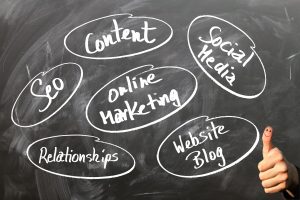Father’s Day is quickly approaching; June 18 will be here before you know it! Our dads are our first hero; they are the strongest men alive and the best spider killers on the planet (well, mine is at least). Many have also taken on the role of “Mr. Mom.” If you just look at the cost of childcare, you’ll understand why some parents are opting to stay at home rather than pay for daycare. Though dads taking the stay-at-home caregiver role are slowly becoming a more common occurrence, it is still met with some social resistance.
Continue reading
Author Archives: Alyssa Smith
Saving Our Sanity: Why Taking a Mental Health Day is a Positive Thing
We’ve just come off a beautiful three day weekend full of sun, family, friends, and fun. If you’re anything like I am, getting up in the morning this week was extra rough. Maybe you sat in your car a second or two longer trying to prolong the weekend feeling. Or, maybe if you’re even more like I am, you considered calling in “sick.” Sunburn counts as a kind of sick right? As the weather gets nice it’s harder and harder to be stuck at work and “mental health days” are thought about more often. Americans have the tendency to be work martyrs and dedicate themselves so much to their job that they leave vacation time on the table. Though some would call taking a “mental health day” irresponsible, sometimes taking a break from work is needed. Here are five reasons playing hooky for your health is a good for you.

You’re Burnt Out
In 2015, 55% of Americans left vacation time on the table combining for a 658 million days unused. Millennials are some of the greatest culprits of this, wanting to prove themselves and disprove the label of lazy and entitled that has been given them. Sometimes we work so hard to accomplish something that we actually end up sabotaging ourselves. Taking even just one day to recharge will help refresh your mind. When you return, you’ll have more energy and mental capacity to tackle your project with increased vigor!
It’s Preventative Medicine
It’s no secret that stress can lower your immune system. When project deadlines are drawing near and you have meetings that are taking up most of your day, it’s easy to become stressed. Though it may seem like a bad idea to take a “mental health day” during these times, it might actually be a great idea and save you in the long run. By taking a day to relax and let your body heal itself, you will be better equipped to stave off that nasty summer cold that’s being passed around. Taking one day for yourself while you are feeling well is much better than a taking a week and being sick.
You Will Improve Relationships
We all talk about wanting a work-life balance, but how many of us really have it? We are always accessible, even when we take vacations, we still take calls and answer emails. Even if it takes a second, you are still distracted from what is happening in front of you. My fiancé and I have had many a heated discussion about work interrupting our time as a couple. I won’t lie, we’ve both taken coordinated days off and played hooky together and it’s always a wonderful day. Since we are “sick,” we usually don’t get bothered and are able to focus fully on one another.
You Can Shorten Your To-Do List
As a bride who has less than 6 months to her wedding, my to-do lists are quite lengthy. If you’ve ever been involved in planning a wedding you know it is pretty much a second job; I come home from work only to continue working on our wedding plans. But, even if you aren’t getting married, everyone has to-do lists and chores that are piling up. We can’t find the time or energy to complete them after work. Taking a day to catch up on your list can give you a great sense of accomplishment and help lower your stress levels. You can then carry these feelings over to your work the next day!
You Can Learn a New Skill
You’re burnt out, stressed, bored even. You perform the same tasks day in and out. You have deadlines approaching and you’re anxious.You feel like you’ve stagnated and maybe you’ve lost a few brain cells. Taking a mental health day can help get you out of the funk you’re in. Just because you called off work doesn’t mean you can’t be productive. Take a weekday class or head to the library. You can learn a new skill or research a topic you are interested in. Passionate about giving? Take a day to volunteer. You’ll feel good about yourself and you’ll have exercised your brain in a different way. You may even be able to use your new skills in the workplace to your advantage.
These are just some of the many reasons taking a break from work can be a positive thing. We tend to feel a “real” reason to call off work is needed and forget our wellbeing should be reason enough. As long as you are not making a habit of unplanned call offs, taking a day for yourself can be positive and helpful in the long run.
TweetChanging Careers? Here are the Do’s and Don’t’s
Change. So many feelings are caught up in just one word. Change can be scary. It can bring a sense of renewal. Many times we meet it with opposition. However, in the end, change is a fact of life; nothing stays the same forever. Since “The Great Recession” jobs are not as secure as they once were. Millennials are finding out that things are not how they were for their grandparents and parents who found jobs right out of school and stayed there until retirement. When you are changing careers things can be daunting. Though this can be stressful, it can also be very rewarding. Here are some do’s and don’t’s to consider when switching careers to help make the process go smoothly.
TweetBody Language at the Office: What’s Yours Saying?
We’ve talked a lot about how to create an effective message with a target audience in mind, and how to communicate a business plan and get employees to buy in, but we’ve really only talked about the obvious when it comes to communicating. We all know that there is more to communication than just words on a page or the phrases that we speak.
Continue reading
How to Manage a Multi-Generational Workforce
In the past, we’ve discussed the different outlooks of each generation; how they like to give, their values, their buying habits. But, what happens when you put them all in one place? How do you manage an office where you have employees from Baby Boomers to Generation Z all working together? Each group has given criticism of the other over the years. How can you get them to work as a team and create a cohesive work environment in which  individuals of all generations and outlooks have the chance to succeed? Let’s take a look at what makes each of these generational cohorts tick as well as how to manage and motivate these groups in the office.
individuals of all generations and outlooks have the chance to succeed? Let’s take a look at what makes each of these generational cohorts tick as well as how to manage and motivate these groups in the office.
First let’s breakdown the main characteristics, values, and attributes of each cohort. Keep in mind these are generalizations of each group and can vary from person to person.
Baby Boomers
- Born between the years of 1946 and 1964.
- In 2015, Baby Boomers numbered around 74.9 million in the U.S. and at that time made up 33% of the workforce.
- They are work-centric, competitive, and goal-oriented in the workplace; and are motivated by positions and prestige. Many are in supervisory roles.
Generation X
- Born between the years of 1961-1981.
- This cohort has a population of about 46 million in the U.S. Because of their relatively small size compared to that of the Baby Boomers and Millennials they often get ignored by marketers.
- In the workplace they are looking for a work-life balance, are tech-savvy, and independent in their work.
Millennials
- Born between 1980-2000.
- As of 2012, Millennials numbered around 80 million in the U.S. They now edge out Baby Boomers in size and are the largest generation in Western history as well as the most educated.
- They are entrepreneurial in nature and value collaboration, diversity, and wellness in the workplace.
Generation Z
- Born around 1995-2010.
- Are around 74 million in number in the U.S. This number may continue to grow depending on immigration.
- The oldest of this cohort are around 21 and just entering the workforce. They are entrepreneurial and practical.
Looking at these generational groups there are many different values and characteristics across them. Each has different aspects about work that drives them and what they value in a job. Managing a workforce which includes members of most if not all of these groups may seem impossible, but it is not. Here are several things to keep in mind when managing a diverse group:
Create a communication standard: Each generation has its own preference when it comes to communicating and these differing opinions can cause friction between the groups. For example, Baby Boomers are more formal in their communication, Millennials and Generation Z are fine with a text message. Setting a standard for how certain information should be communicated within the office can take personal and generational preference out of the equation and help avoid any confusion and tension.
Get them talking: Bring together a diverse group of individuals from each cohort; have them get to know each other and keep it casual. Let them talk about their differences, what they care about, and how they can better workplace relationships between the generations. In this group, you can create a new hybrid group, a “cocktail cohort” which can help foster understanding throughout the office.
Consider the individual: Though we are talking about characteristics of different age groups, this does not mean you should blindly assume that depending on which generation they fall in that they embody all or any of the attributes of said group (this Millennial hates that). Get to know your employees’ interests and be flexible and open; adjust management styles when needed. All employees want to feel they are needed and the work they do matters.
As the office demographic ebbs and flows with the retiring of Baby Boomers and additions from Generation Z, management styles will be in flux. It is important to also keep the outlook of your organization in mind when managing all employees. A multi-generational office should not be looked at negatively; use the diversity it allows to your advantage.
TweetDress for the Job You Want: How Dress Affects the Workplace
 They say, “dress for the job you want, not the job you have.” If that was the case for me, I’d be wearing a tiara and be dressed like Belle. Alas, a professional princess is a position that isn’t widely available. Dress codes are quite common in the professional world, some more relaxed than others. What you wear can affect many things–how you feel, how others react to you, even how you perform. So, why do employers institute dress codes, why are there so many controversies surrounding them, and how does it affect the workplace?
They say, “dress for the job you want, not the job you have.” If that was the case for me, I’d be wearing a tiara and be dressed like Belle. Alas, a professional princess is a position that isn’t widely available. Dress codes are quite common in the professional world, some more relaxed than others. What you wear can affect many things–how you feel, how others react to you, even how you perform. So, why do employers institute dress codes, why are there so many controversies surrounding them, and how does it affect the workplace?
Navigating Cloud Computing
“The Cloud.” We’ve all heard the term. We understand it in the most abstract of ideas. We can store files in it, run programs from it, heck, my fiancé talks about setting up virtual servers (whatever that means). This digital storehouse of sorts can come in very handy; but what is it exactly and how can it be used to its best advantage? Does it have down falls? Let’s define “The Cloud” and what it can do for you and your organization.
What is it?
Most digital data is non-tangible but is stored on devices that are. As I type this post, the information is saved to my computer’s hard drive. The hard drive is a physical piece of equipment. It can be removed and placed into another device and the information on it accessed. With The Cloud, there is no physical device needed to reach your digital files. By using The Cloud, I am able to create and edit files from practically anywhere. It is a globally connected computer you always have access to.
Information is essentially stored “on the internet”. The Cloud is run by off-site servers that do the majority of the workload. Instead of having software loaded into multiple computers, it can be accessed from the servers by means of online applications. This allows the connection from any device with internet access.
Saves space: By operating office-site servers and not taking loading additional software onto hard drives, you don’t lose physical space in your facility nor storage space on your computers. This means less upkeep and less clutter on your hard drive.
Accessibility: Have an internet connected device? Great! You have access. You have the ability to work from anywhere, as do your co-workers, and you can all collaborate.
Cost: Before cloud computing, you would need to buy software for each computer and upkeep their licensures. Utilizing The Cloud can cut cost on the amount of software you purchase.
Con’s
Accessibility: Though accessibility is a strong point of The Cloud, it is also a downfall. If you have a subpar internet connection, good luck reaching your files. It’s in instances like this that having the software installed on your physical device would be more appropriate.
Security: The Cloud “lives” online and you can access it easily, which means if it is easy for you, it’s easy for others. You need to pay close attention to security protocols to make sure your information does not get into the wrong hands.
Control: Hosting servers off-site or contracting services from an outside source takes control away from your in-house tech team. You are no longer in charge of your own equipment and are unable to service it. You will rely on the integration of services from outside vendors, which can at times be tasking.
So what do you do with all of this information? How does this best work for your organization? What is the most cost effective? These are questions you need to ask before outlining how The Cloud will work into your business plan. If you are just looking to store a small amount of noncritical information or are just looking for email hosting, utilizing cloud services from an outside vendor may be beneficial. If you are looking to create a cloud computing system for a large amount of secure information you may want to look into buying and creating your own system so that you retain control and security options.
The Cloud is only growing. Figuring out how to utilize it in your business plan is essential. How do you already use cloud computing, or how do you plan to use it in the future?
TweetMaking an Investment: Tips for Vetting Strategic Marketing Companies
We like to think we have it together and can do it all, but we know that it’s not true. A lot of the times we feel like we are being pulled in 6 different directions. Sometimes this is not far from the truth.
Organizations can spread employees thin on multiple projects in order to save costs. Now, don’t get me wrong, I’m all about saving money where you can, but spreading your most valuable resource (yourself and your employees) too thin can be counter productive.
In the workplace, when things get busy some “non-essential” projects get pushed to the back burner. When this happens, marketing is one of the areas that tends to go by the wayside. If you are looking for success and growth, ignoring to set good marketing practices can hurt you in the long run. Marketing is an ongoing project that needs continuous monitoring and evaluation. It is not a one-time thing; it’s an investment. You may think its more cost effective to figure this all out in-house, however, if you don’t have the human capital to concentrate on this, you may want to look for help from a professional marketing group. To make sure you get the best bang for your buck with said investment, here are several tips for vetting a strategic marketing company.
How’s the Fit?
When you start looking into different marketing agencies, one of the first things you need to explore is how well they will fit with your company and its needs. They will be representing your organization; are they capable of echoing your voice and values? Also will their communication styles jive with yours? If your group values face time, you don’t want to work with a strategic marketing company that relies heavily on email communication.
Collaboration
Though you are outsourcing your marketing management, you may not be outsourcing your graphic and web design projects. Or maybe you already have other vendors taking care of those needs. When interviewing potential agencies, discuss how they will collaborate with other groups in the creative process. If they are not willing or will have issues working with the platforms that have already been established, it’s best to know before signing a contract.
Professionalism
This should probably go without saying, but you want to make sure that the group you choose is professional and educated in marketing skills. You’d like to think anyone who presents themselves as “marketer” is professional and competent, but sadly that’s not always the truth. Before even picking up the phone, do some research, look at their portfolio work, do they list education backgrounds? How long have they been established? Remember you are making an investment; do some leg work first.
Know your Aim
Are you looking for more content marketing management, digital, or both? Be sure you know what your goals are before starting the vetting process or you may end up wasting time vetting marketing companies that can’t provide what you are looking for. Once you have decided, be sure to ask goal-driving questions. Just because a group says they do digital and/or content management, doesn’t mean they do it well. Find out what their strengths are and if they fit your specific needs.
References
Think of this process as you would hiring a new employee. You wouldn’t just hire someone off the street no questions asked, right? Ask for client references and a list of past portfolio work.
Marketing is essential to helping a business grow especially in the digital age. Consumers and potential clients are looking for a brand with a story. Relying on word of mouth can only go so far. Remember marketing is a long term investment for long term rewards. When choosing a marketing strategy and a potential outside company, keep this all in perspective.
TweetPresidents’ Day: How will the Trump Presidency Affect Business?
Monday February 20 is Presidents’ Day and many have the day off (lucky ducks). Originally, this holiday started as the celebration of George Washington’s birthday (February 22) but has since evolved. Now it’s a Monday holiday that celebrates our nation’s presidents past and present. Presently, we are one month into the Trump Presidency, and like it or not, there have been many changes. Trump campaigned with the slogan “Make America Great Again,” with the promise to invigorate businesses and the American economy. Now that he has spent a month in the Oval Office, what can we expect the effect of his proposed changes will be on businesses, nationally and abroad?
 Taxes
Taxes
During his election bid, Trump promised to make taxes simpler and to lower taxes for all Americans. This sounds great, but there’s a catch. President Trump’s tax plan for businesses could hurt small business owners. His proposed tax plan would have all
businesses pay a 15% tax, which is higher than what many small businesses pay currently. So the tax plan is great for the private citizen, but not so great for small business owners. There is a bright side to this, however. With more money staying in the hands of consumers rather than the government, that means they could potentially spend more. This could benefit small businesses; if those extra dollars are spent on their products and services.
Growth
Trump is the first U.S. President to never have held a public office prior to his presidency. Much of his campaign was run focusing on his experience as a businessman and how he would make the United States a more profitable nation. The Republican Party typically takes a hands-off approach when it comes to governing and regulations. Trump followed party ideology by reversing many of the previous administration’s regulatory decisions, such as the Keystone Pipeline. His stance on coal, oil, and gas regulations can provide quite a boost for these industries; but deals a blow to the “Green Initiative” companies favored by President Obama. It is the support of industries like coal, oil, and gas which may have indeed won Trump several states like Pennsylvania (a typically Democratic-leaning state), in which these industries are a major part of the local economy.
Global Economy
Another key platform issue during the 2016 presidential campaign was foreign trade and the global economy. President Trump plans to make changes to trade agreements and taxes on U.S. companies that manufacture items outside of our domestic borders. This is in hopes that bringing industry back to the States could help the national economy and employment levels. Many companies that manufacture goods in foreign countries, such as Carrier, have now chosen to return to America to do business due to Trump’s proposed policies, and regulation changes in countries like China. The cost to do business abroad may soon increase and no longer be a profitable option. This will have a direct effect on the countries and their economies in which these industries are pulling out and could have a negative effect on the global economy.
Whether you love it or hate it the Trump administration is poised to make changes. How do you think this presidency will affect business? Will President Trump keep his campaign promises, or will he keep us guessing?
TweetCustomer Experience: What It Is and How to Create It
We all have certain stores and brands that we keep going back to time after time. They consistently provide us with great products and services. When our friends and family ask for suggestions, they are a name we quickly and confidently provide. We love these companies, but what brings us back for more?
Yes, they provide quality and a product. Yes, they have great customer service. But it’s more than just those things. They create and maintain an excellent customer experience. What exactly does that mean, though? How do you create it? Is it just something that happens with time? Can it be improved? Let’s discuss.

I bet you’re thinking, customer experience, that’s just a fancy way of saying customer service. WRONG. Though it does include customer service, customer experience is a mix of many things. Think about when you walk into your favorite store, there’s something about the atmosphere and the ease of finding or ordering what you need. Also, you can’t forget about the product or service. You get quality at each turn and you keep coming back.
So, how do they make it happen? Customer experience does not just happen (though if you have a good business plan it may seem like it does); it is created. It’s in the branding and package design, it’s in the materials that go into making the product, and that product’s design. It’s the look and feel of the brick and mortar location. It’s your online presence. It’s in the message the brand exudes. It’s the people and the training they receive. It’s planning. Whether you have an established company or are working to establish a new organization, here are some ways to create and/or improve your customer experience:
Keep It Cohesive
Make sure everyone and everything are on the same page. You take time crafting your mission and message, so put them to work. These should go further than just something employees read in their handbooks; be more than just a catchy tagline. They should mean something to the company and the customer. Everyone in the organization should buy into these messages, and they should carry through all facets of the brand. Also, don’t forget to make sure all branding and imaging carry through the brand as well. You want to be recognizable; make sure your theme is integrated through all platforms.
Make Things Easy
Who doesn’t like easy? Millennials and Generation Z have short attention spans. If it takes too many steps, they are moving on. We are also seeing in the retail world a move from shopping at brick and mortar stores to online shopping. If you don’t have an online presence, you are in trouble. So many locations extend their reach and experience for the customers to multiple channels; online, apps, social media, and physical locations. Each providing ease of access to products and deals. Companies that cannot convert the experience to multiple platforms are faltering. For example, The Limited has just closed all of its physical retail locations–just one of the many recent retail casualties. Though they provided good in-store experiences, The Limited was slow to transition to multi-faceted selling platforms. Only in the past several years did the brand start to offer computerized in-store online ordering, something many other brands had established long before which calculated into their demise.
People Power
Now, I know I said this wasn’t about customer service, but it is part of it. You can make sure that your online platform is easy to navigate, bug-free, and rarely down, but if your customer service is horrible, then forget it. Invest in your people, in their initial training, in their well-being, and their advancement. Happy employees carry their enthusiasm to those they interact with. I am currently planning a wedding and working to interview different “Big Day” vendors. It’s exhausting, but one thing I will say is that all of these vendors get what it means to create a customer experience. I recently said “yes to my dress,” and the experience and service there was amazing. They made sure my pregnant bridesmaids always had water and snacks; the woman who helped me find my dress even gave me her personal cell phone number so I can keep her updated on my wedding planning progress. They added the personal touch and made me feel special. If you can instill the importance of making a connection with your clients to everybody in your organization, you will have them coming back for more time and time again. Make them see the value in your people as well as in your product.
Customer experience is an expansive concept that includes, customer service, good products, easy online navigation, and more. Competition is everywhere. Make a plan that will help you stand out and connect with your client base. Plan for customer experience; don’t think it will happen magically.
Tweet
